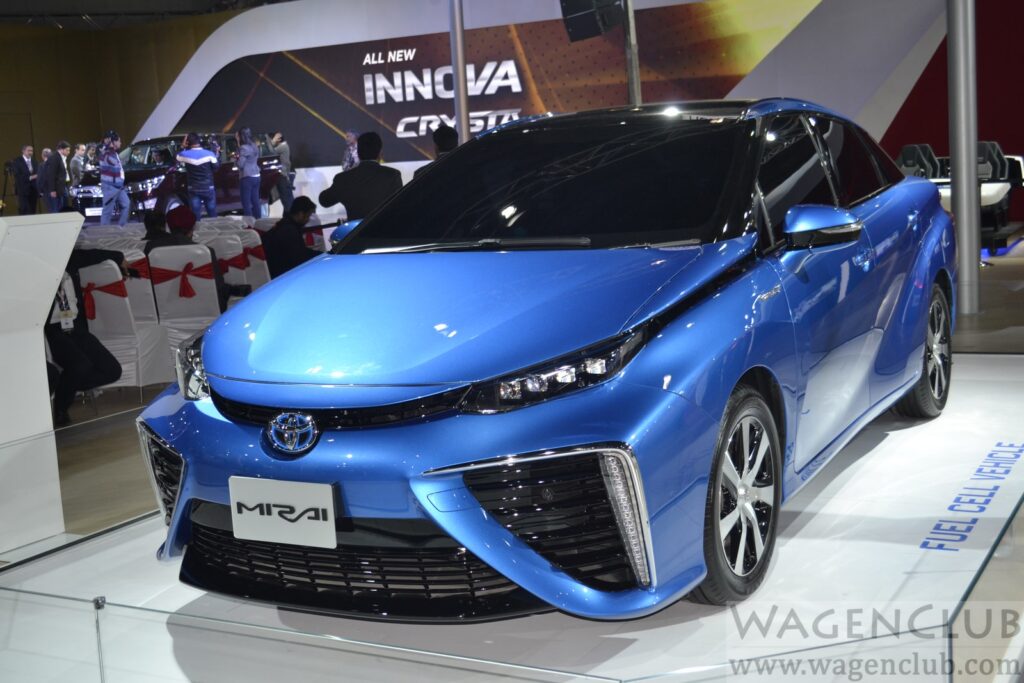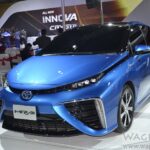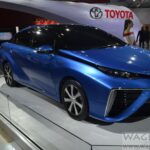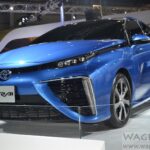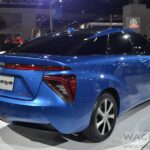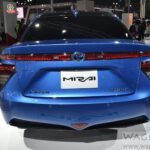Toyota Mirai: Exceptional Technology masked by curvy design
Do you want to buy a car that is energy efficient, but rather in a unique way of its own? A car that will turn heads wherever you go, not simply because of its styling but more so of its technology? Neither an electric car nor a self-driving wizard, but a down-to-earth car that is also affordable? And a car that even make a BMW i8 might feel envy of?? Then you can have just this car, the Toyota Mirai Fuel-cell car. On sale in Japan, USA, and a host of European countries, the Mirai is a lovely car with adorable detailing. But what is even more fascinating than its design and styling is the phenomenal technology that goes totally unnoticed under the skin.
The Mirai sedan, as we know, is based on the recent Toyota FCV (Fuel Cell Vehicle) concept, but is also a concrete outcome of the company researches since 1960s when the idea of using hydrogen as an auto fuel was sparked off for the first time. All through these years, every FCV prototypes by different automakers were invariably SUVs or mini-vans, not out of choice but of design requirements to accommodate large and bulky components unlike diesel or petrol technology. For instance, hydrogen tanks have to be heavier and bigger to withstand high pressures, unlike fuel tanks of our cars that are neatly stuffed underneath. Massive battery, fuel cell pack, and boost converter were always cumbersome to be lodged in any small or mid-size cars.
Also Read: Nissan Reveals World’s First Solid-Oxide Fuel Cell Vehicle
That’s why the Mirai is nothing short of an engineering marvel, as the designers have managed to squeeze every hydrogen fuel cell components into a perfectly sized sedan not far removed from the dimensions of the Toyota Prius Hybrid. Basically the car has three main components: the FC stack, boost converter, and the high-pressure hydrogen tanks. The stack under the floor board contains a set of 370 fuel cells connected in series to generate around 114 kW of power. It uses world’s first 3D fine mesh flow channels to ensure uniform voltage production. An individual cell can produce around 1 volt or less than that only, so plenty of them are necessary. The stack frame is constructed from thermoplastic (carbon fiber-reinforced plastic), thereby protecting the stack from road bumps and damages by absorbing impact shocks. This ingenious arrangement has actually helped the interiors to stay large and spacious.
The two hydrogen tanks with a combined volume of 122.4 liters consists of 3-layer structure made of carbon fiber-reinforced plastics that stores the fuel at extreme pressure of almost 700 bars (while CNG in our car tanks approx. @ 250 bars). They can also withstand 150-tons (say 150 hatchbacks) of weight pressure on it. The Nickel-metal hydride battery acts only as the buffer – storing excess energy during ignition and acceleration, unlike regular electric cars. The FC produces adequate energy to power the electric motor no matter what the demand is. The power-control unit and the AC synchronous electric motor generating 154 PS of power are located under the hood.
Also Read: Why BMW i8’s Laser Headlamps Are Terrifically Brilliant?
The FC reaction is said to be silent and the only by-product (emission) is water – warm and tepid to touch and theoretically drinkable. Interestingly, the Mirai is said to produce too much of water – 1 litre for every 12.5 kms. This isn’t an problem in tropical or temperate climates, but in sub-zero conditions, FCs are at risk of splitting thanks to the expanding character of ice. To avert any such possibilities, the car’s system automatically dries the FCs with a whoosh of air once you turn off the car. There is also a ‘H2O’ button on the dashboard if you want to avoid pool of water at your parking space.
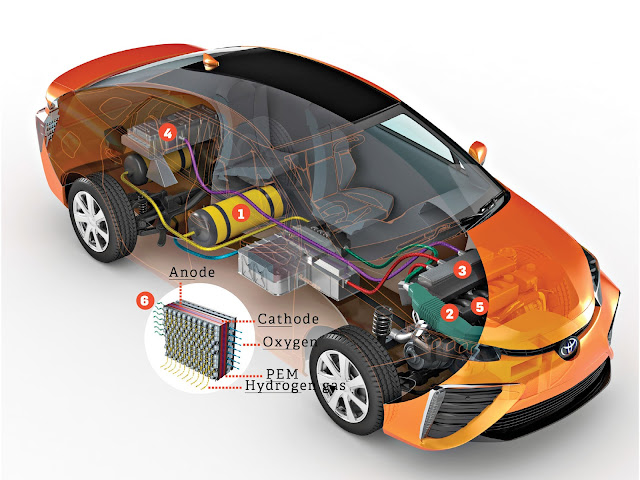
Engineering of Toyota Mirai: 1. Hydrogen Tank 2. Airflow (via Intake grille) 3. PCU 4. Battery 5. Electric Motor 6. Fuel Cell. (Image Credit: Graham Murdoch, Popsci.com)
The exterior and interior design of the car is also functional in nature, not just for aesthetics. For instance, the enormous frontal air intake has been optimised to draw more air into the car for oxygen supply and cooling of fuel cells. Elegant side profiles, lower stance, and a trapezoidal shape at the rear are all tuned for aerodynamics that improve airflow. The 17-inch aluminum wheels that have been made lighter by engraving process, i.e. trimming from the intersecting line between the disk and rim, reducing around 500 grams in each.
The Toyota Mirai is a car that will get people to realise that the technology does trickle down to visible levels. The idea of making a car to run using a fuel and emit only water creating zero-pollution remained only as a fascination so far. Quite appreciably, Toyota has released some 5,500 patents in the public domain to encourage other manufacturers to embark on hydrogen technology. The Mirai is definitely a milestone in terms of both technological advancement and its commercial success.
Also Read: Volkswagen and Audi Plan Big On Fuel-Cell Hydrogen Cars
Next, would you like to read more on Toyota, or Hydrogen Fuel Cell Cars??

